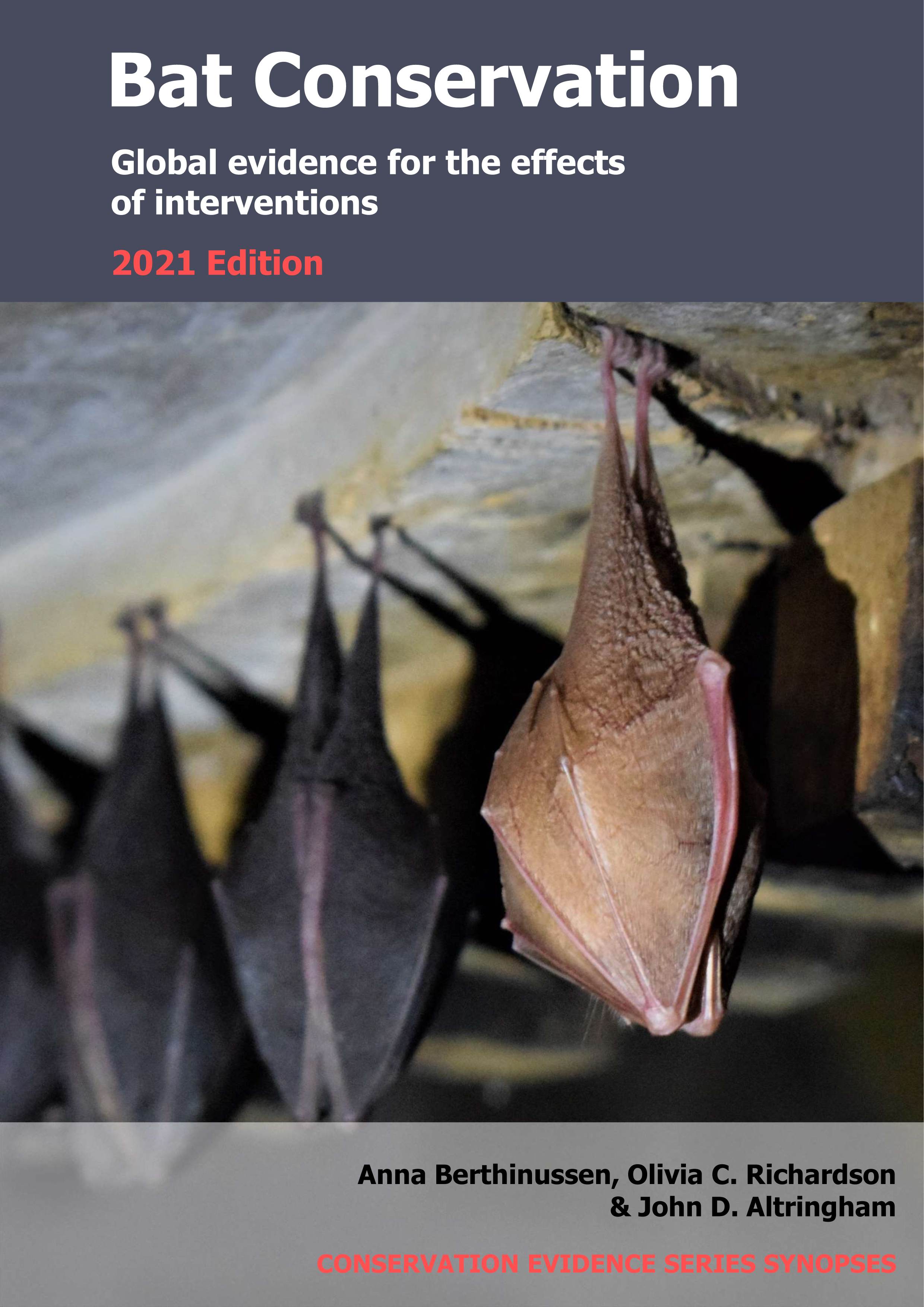Control invasive plant species
-
Overall effectiveness category Unknown effectiveness (limited evidence)
-
Number of studies: 1
View assessment score
Hide assessment score
How is the evidence assessed?
-
Effectiveness
20% -
Certainty
10% -
Harms
0%
Study locations
Supporting evidence from individual studies
A site comparison study in 2004–2005 in nine forest fragments within the Chicago metropolitan area, USA (Smith & Gehrt 2010) found that two of seven forest fragments that had undergone restoration, including invasive plant species removal, had higher bat activity than two unrestored forest fragments. Bat activity was higher in two forest fragments that had been restored with invasive plant species removal, multiple prescribed burns, and snag recruitment (average 7–19 bat passes/survey) than in two control sites with no restoration (average 1–4 bat passes/survey). Bat activity was similar between control sites and five other forest fragments that had been restored with various combinations of invasive plant species removal, multiple prescribed burns, snag recruitment and deer population control (1–6 bat passes/survey). Six bat species were recorded in total (see original paper for data for individual species). The study does not distinguish between the effects of invasive plant species removal and the other interventions carried out. Fire suppression over the last 100 years had altered the structure of the nine forest fragments (10–260 ha in size). Seven of the nine forest fragments were being restored to open the canopy, reduce tree density and remove invasive plant species. At each of nine sites, four bat detectors recorded bat activity for 4 h from sunset for five nights/year in June–September 2004 and May–August 2005.
Study and other actions tested
Where has this evidence come from?
List of journals searched by synopsis
All the journals searched for all synopses
This Action forms part of the Action Synopsis:
Bat Conservation
Bat Conservation - Published 2021
Update 2020





)_2023.JPG)














